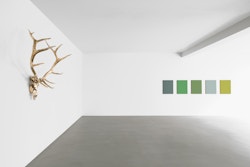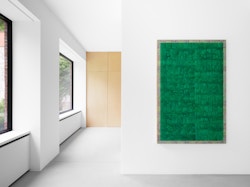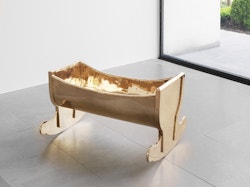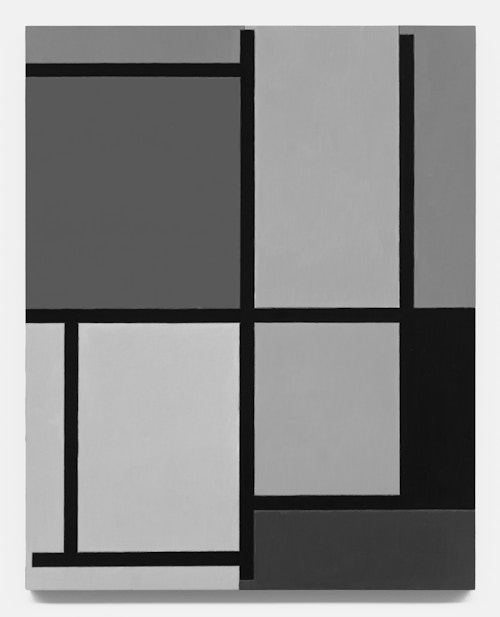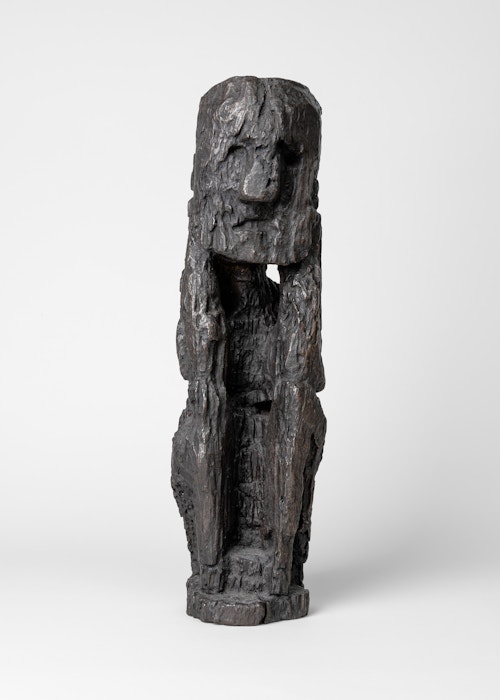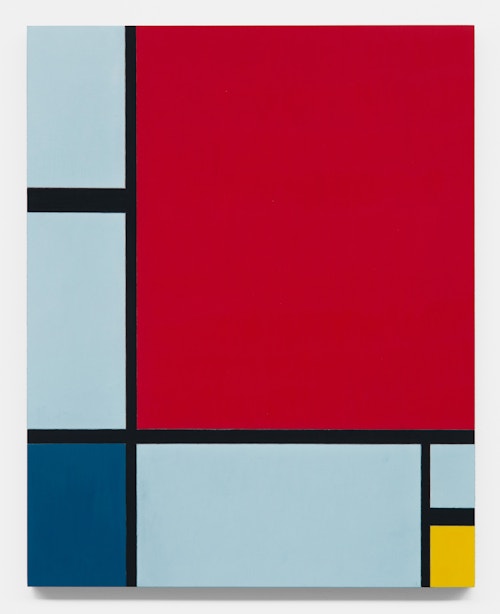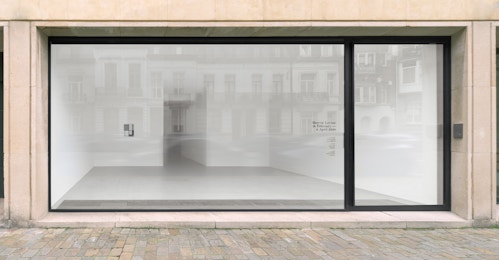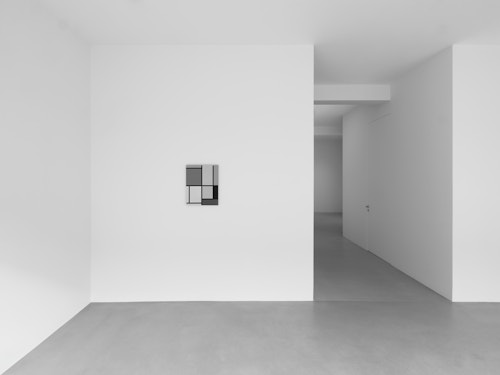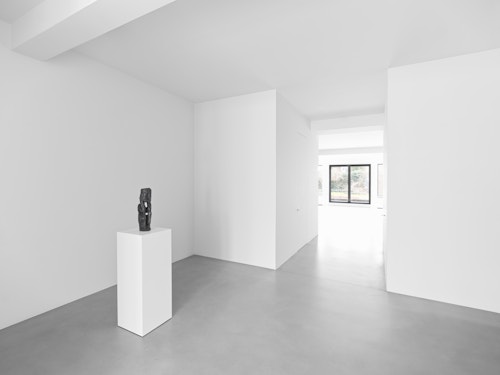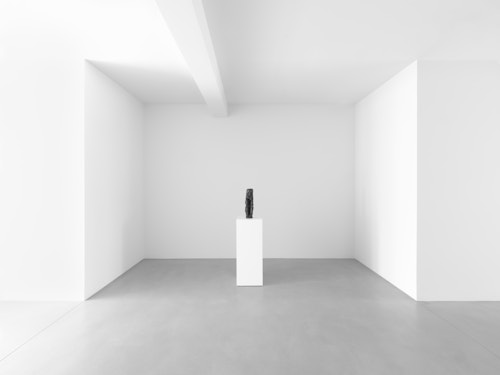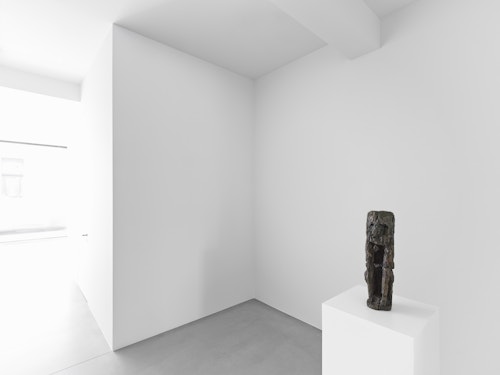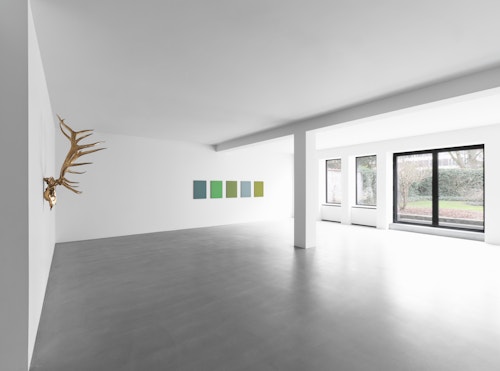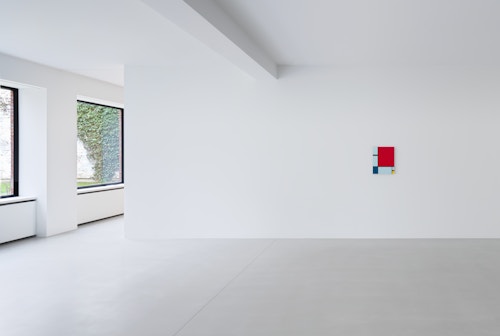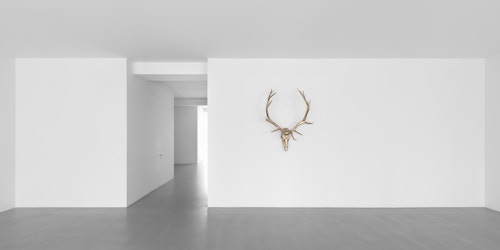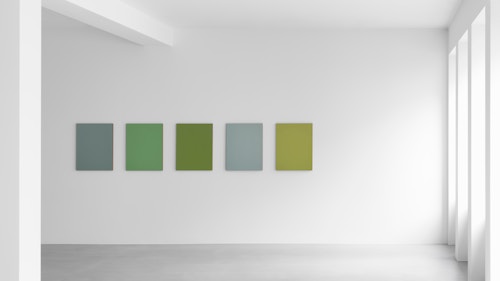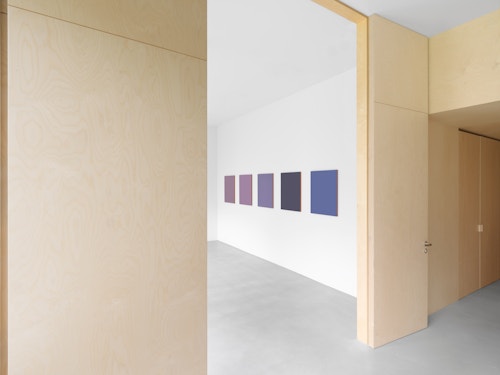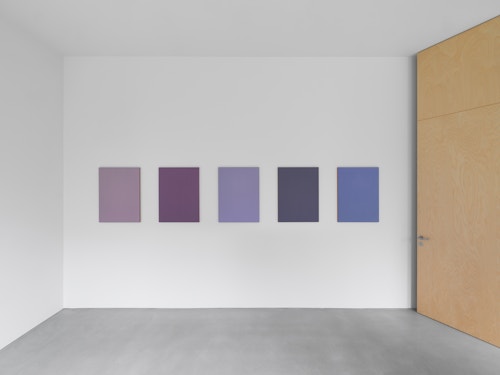
Sherrie Levine
American artist Sherrie Levine’s third exhibition with the gallery brings together new paintings and sculptures that reference some of the most seminal artists of the modern era. Vincent van Gogh and Piet Mondrian are the inspiration behind Levine’s new oil paintings, in dialogue with Elk Skull (2024) – a spectacular polished bronze cast of an antlered skull.
Sherrie Levine has long appropriated well-known artworks to create her own unique oeuvre. By revisiting specific images from different technical and conceptual standpoints over the years, she has created interrelated bodies of work that speak to both the art historical canon and to each other. While these can be analysed from a theoretical standpoint, they are just as much a homage to the artists she admires. Levine has recently returned to the oeuvres of Van Gogh and Mondrian to produce two new series of paintings. In art historical terms, the Dutch masters could not be more different: Van Gogh, the expressionist, poetic painter of nature and Mondrian, the rational champion of geometric abstraction; one the proponent of an art that stood above nature, the other almost preternaturally attuned to the landscape. Yet in posthumous terms, they meet on common ground. Their paintings, which have an almost hallowed status, are crowd-pullers and reproduced on everything from postcards to T-shirts.

Levine’s ten new monochromes are inspired by Van Gogh’s iris paintings. Five are single colour ‘averages’, which were created via digital analyses of the original colour palettes, and the others are inverse equivalents. Van Gogh completed the iris canvases in the last year of his life while a patient at the psychiatric hospital in Saint-Rémy-de-Provence. Now amongst his most celebrated works, he originally referred to them as ‘colour studies’. Levine distils each of Van Gogh’s vibrant paintings into a single tone. His multicoloured palette becomes monochrome, expressionism turns into abstract minimalism, emotion gives way to sobriety, variations are averaged, formats are standardised, and the hand of the artist vanishes. What is the relationship between the ‘old’ and the ‘new’ works? Levine’s monochromes are a development of the Meltdown series that she commenced in 1989. In these earlier works, she digitally reduced the colour palettes of notable paintings to twelve pixels, turning each value into a woodblock print. This process has now reached a logical conclusion: instead of twelve coloured rectangles representing each work, there is now just one.
The After Piet Mondrian (2023-ongoing) paintings are based on a 1983 series of chromogenic photographs (c-prints) that Levine made from book illustrations of the Dutch artist’s grid compositions. She is now painting the c-prints, thereby ‘rematerialising’ them, so to speak, and bringing her research full circle. The aim is to complete a coloured, inverse and a black and white painting of each of her photographs. Via the series, created four decades apart, Levine highlights and disrupts the links between original artwork, photograph, reproduction, and source (book). The distortion and misrepresentation of colour is as much of a concern today as it was in 1983, with Levine removing it entirely in the black-and-white painting. Yet one distortion leads to another, as she has also reformatted Mondrian’s works to fit identically sized mahogany panels.
The sculptures Elk Skull (2024) and Water Spirit (2012) are further examples of material transformation. Cast from found objects – one organic, the other manmade – they interrogate, like the paintings, the uneasy relationships between original and reproduction or, in the case of sculpture, replication. Elk Skull is not only the most recent work in her ongoing series of polished animal skull casts, but also the largest example that she has made in recent years. It alludes, in equal measure, to Georgia O’Keeffe’s famous skull paintings and to the iconography of the American Southwest. Levine started making these casts after spending time in Santa Fe, where O’Keeffe lived and worked. But while the latter’s skull paintings explored the power of nature over the individual, Levine’s polished bronze recalls the sculptures of two other male, modernist artists, Brancusi, and Arp. Water Spirit, a free-standing sculpture in patinated bronze, with its soft dark sheen, forms a tactile counterpoint to the gleaming wall-mounted skull and attests to the artist’s ongoing interest in materiality and crafts objects.
Sherrie Levine (b.1947) lives and works in New York. Her earliest work was included in the seminal exhibition Pictures (1977) at the Artists Space in New York. In 1981 Levine debuted her controversial series Untitled, After Walker Evans which, together with other similar series, made her a leading member of the ‘Pictures Generation’, a group of artists using appropriation techniques to challenge the notions of authenticity and originality in the media-saturated 1980s. Levine's work has been the subject of solo exhibitions at prominent institutions worldwide and can be found in major international museum collections.
